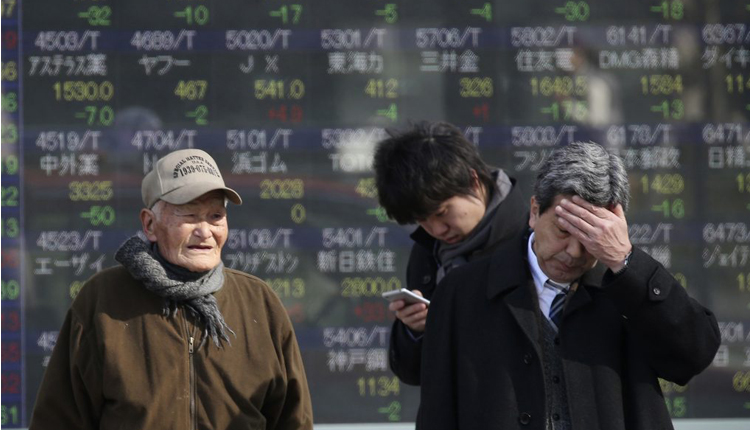Asian markets were mixed in Monday afternoon trade as the latest round of U.S. and China tariffs kicked into effect over the weekend, while investors digested better-than-expected Chinese manufacturing activity.
Mainland Chinese shares jumped by the afternoon, as the Shanghai composite added 1.07 percent and Shenzhen component was up 1.69 percent. The Shenzhen composite also gained 1.728 percent.
The technology sector also got a boost from a Sunday statement about the importance of investing in the high-tech sector, as the Chinext index jumped 2.311 percent.
China’s State Council had announced more measures to support its economy on Sunday. In the statement, originally posted in Mandarin, it said that it attached “great importance” to the development of sectors such as infrastructure, high-tech, and the transformation of traditional industries.
Over in Hong Kong, however, the Hang Seng index slipped 0.47 percent. Tensions ramped up in the beleaguered city, with another round of fresh protests that occurred over the weekend.
Shares of railway operator MTR plunged 3.19 percent, with infrastructure at multiple stations being damaged in the past few days.
Elsewhere, the Nikkei 225 in Japan shed 0.35 percent, while the Topix index also fell 0.37 percent. Over in South Korea, the Kospi rose 0.2 percent. Australia’s S&P/ASX 200 traded 0.46 percent lower.
Overall, the MSCI Asia ex-Japan index fell 0.24%.
New tariffs
U.S. tariffs went into effect Sunday on $112 billion of Chinese imports, while Beijing also began imposing retaliatory tariffs on some of the U.S. goods on its $75 billion target list.
U.S. President Donald Trump said Sunday that trade negotiations with China are still planned for September.
It seems almost impossible to think ” Beijing and Washington are “going to settle everything with one big bang” at the upcoming trade talks in September, Richard Harris, chief executive at Port Shelter Investment Management, told CNBC’s “Squawk Box” on Monday.
“I don’t really expect an awful lot coming from them,” he said. “I think the best markets can hope for is that there’s nothing worse and there’s no big bust up.”
Chinese manufacturing data
A private survey on China’s manufacturing sector showed factory activity unexpectedly grew in August.
The Caixin/Markit Manufacturing Purchasing Managers’ Index for August was at 50.4, better than expectations of 49.8 by economists in a Reuters poll. The 50 level separates expansion and contraction, with PMI readings above that number signalling growth and vice versa.
However, official data showed over the weekend showed factory activity in China shrinking for the fourth month in a row in August.
Currencies and oil
The U.S. dollar index, which tracks the greenback against a basket of its peers, was last at 98.817 after rising from levels below 97.8 last week.
The Japanese yen changed hands at 106.16 against the dollar after weakening from levels below 105 in the previous trading week. The Australian dollar was at $0.6727 after slipping from highs above $0.676 last week.
Oil prices were mixed in the afternoon of Asian trading hours, with international benchmark Brent crude futures down 0.35 percent to $59.04 per barrel. U.S. crude futures, on the other hand, were largely flat at $55.11 per barrel.
Source: CNBC


